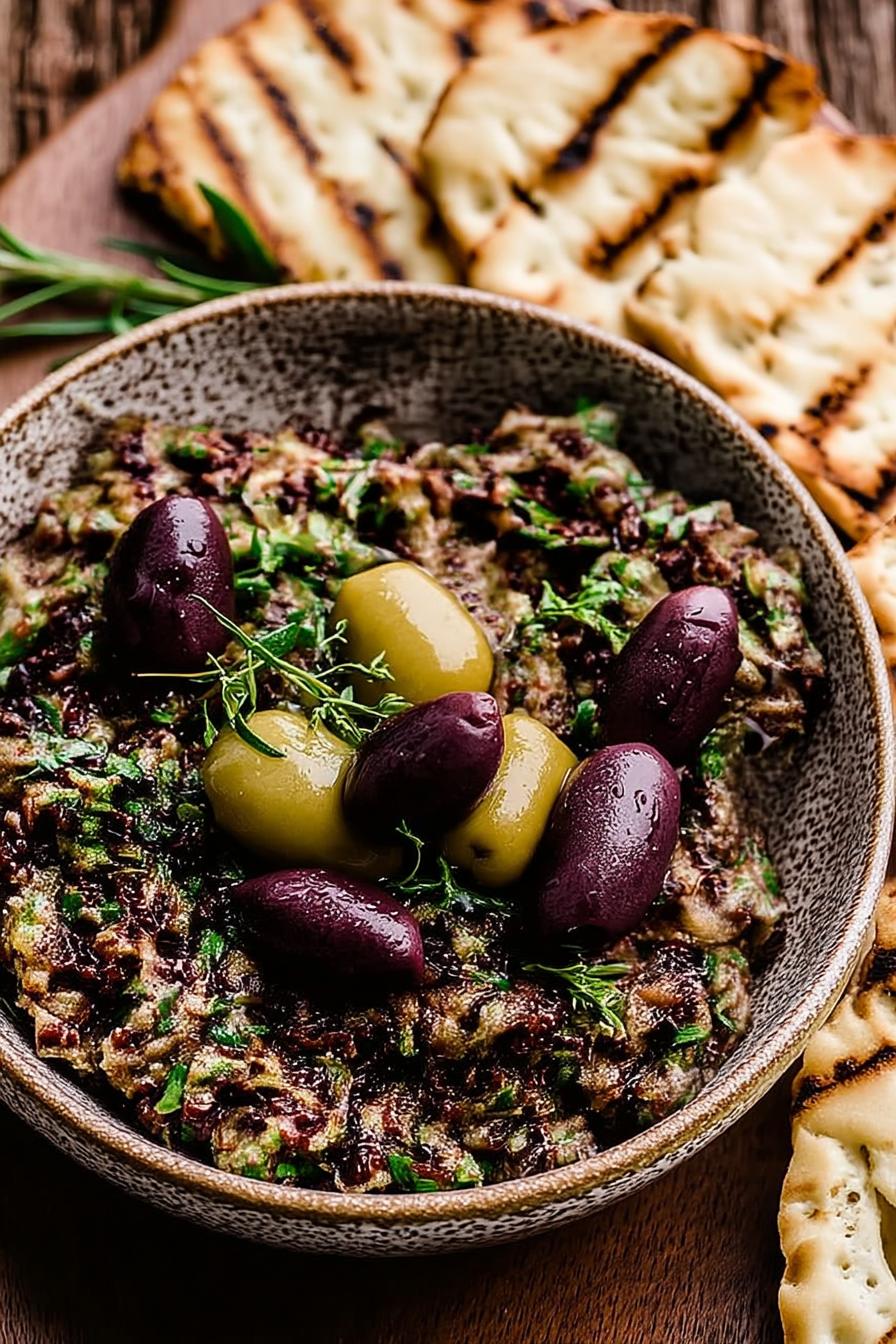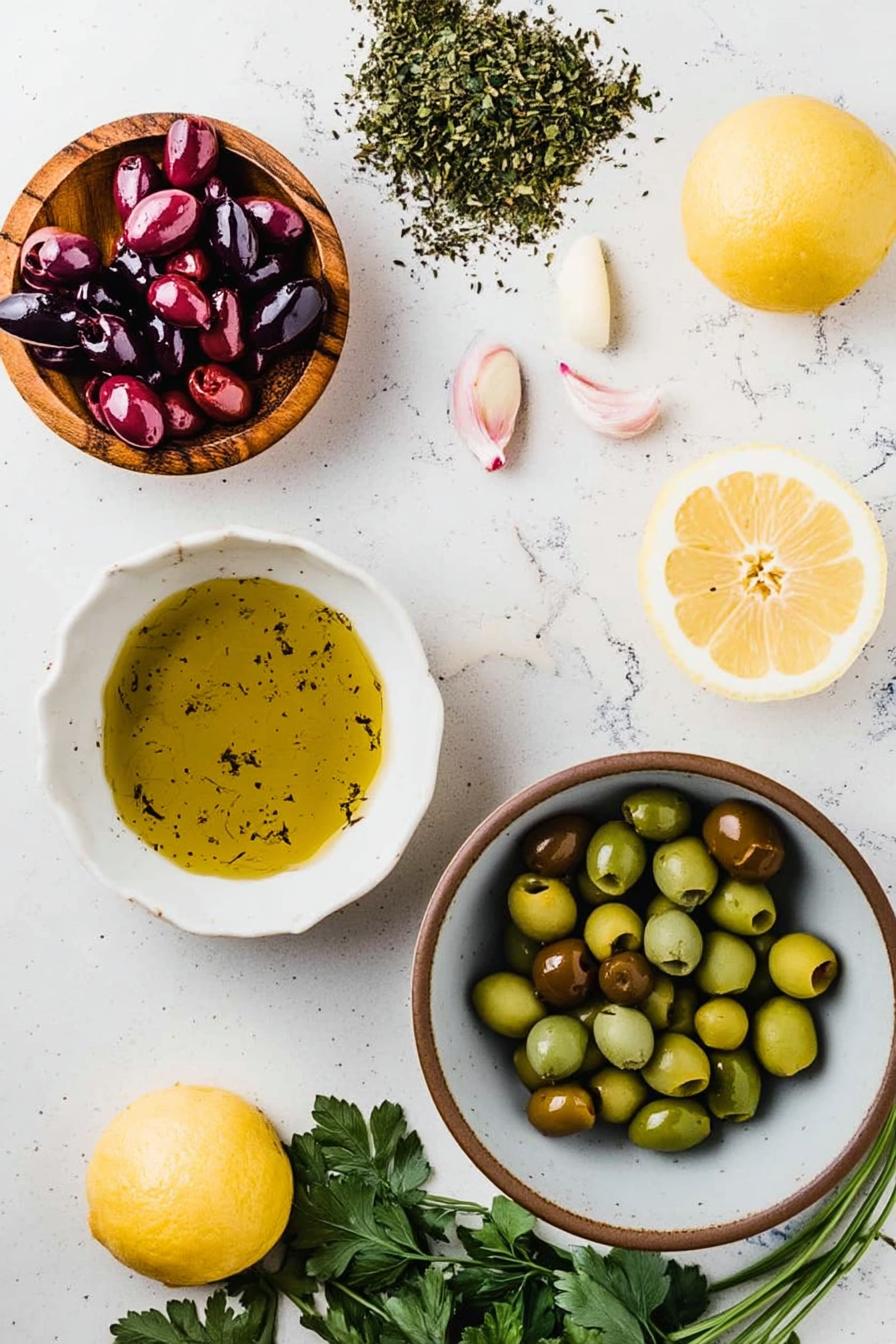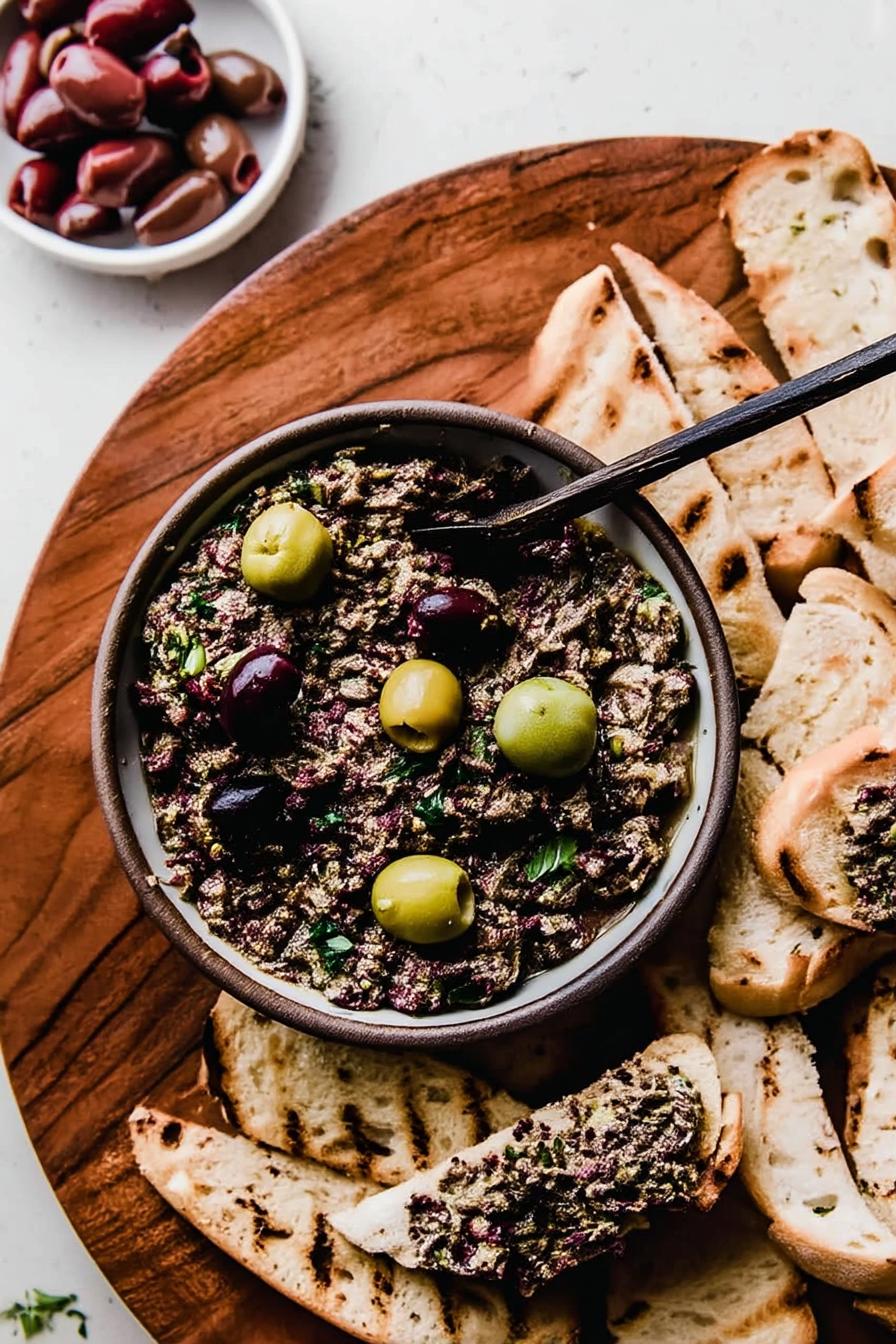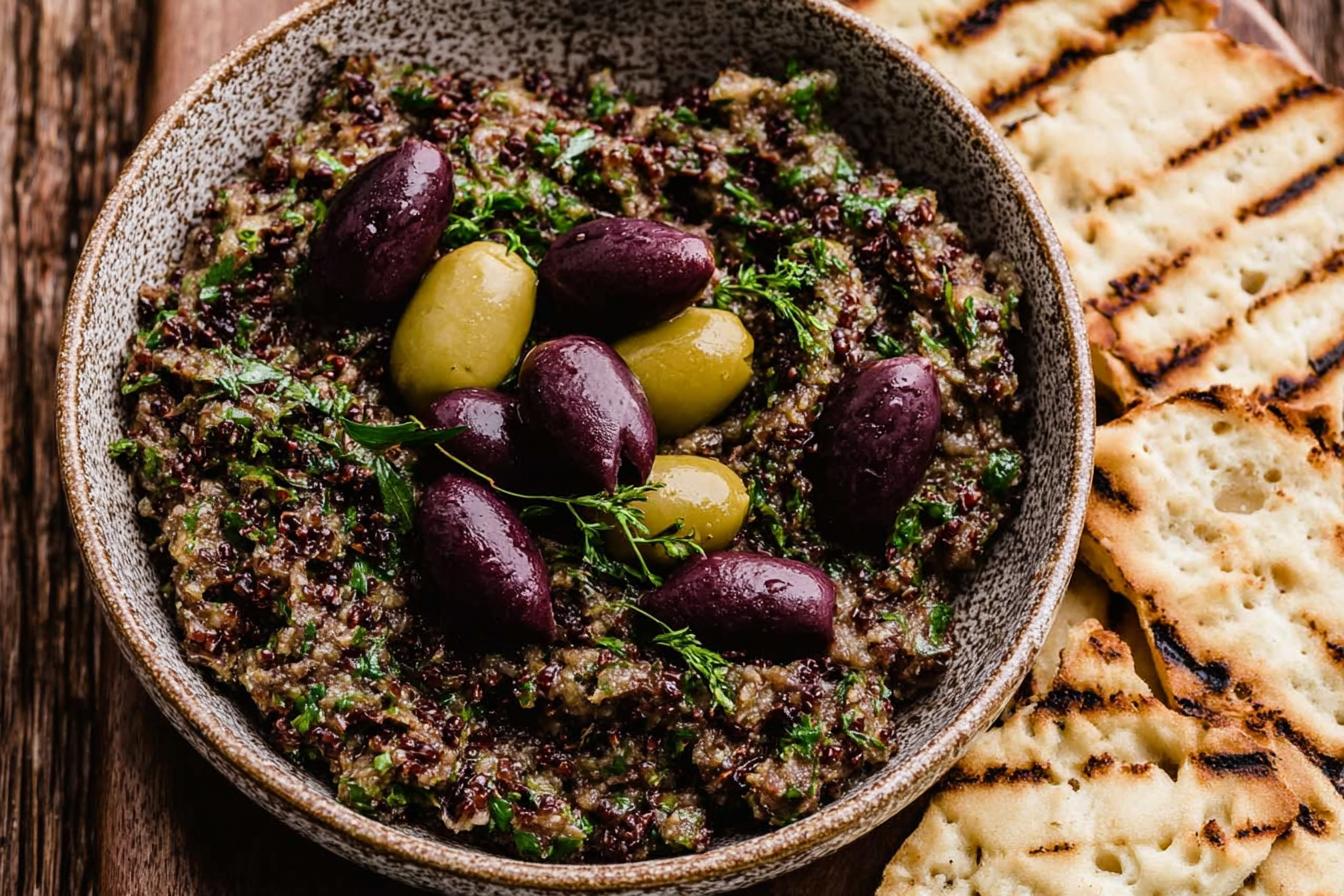There’s something about Olive Tapenade that always fills my kitchen with a nutty toasted scent and glossy surface that beckons you in. After five rounds of testing—tweaking the olive ratio, rinsing capers for just the right brine, and fine-tuning the pulse count—I settled on a version that’s tender with slight bite and crackling as it cools. In my very first batch, I noticed a gentle sizzling aroma when the garlic hit the bowl; by the third, the flavors had deepened overnight in the fridge. Let’s dive into this joyous blend of olives, capers, and anchovies.
Why You’ll Love Olive Tapenade
- Silky-smooth texture punctuated by coarse bits for mouthfeel
- Fragrant steam of garlic and lemon that brightens every bite
- Quick to assemble in about 10 minutes—ideal for last-minute gatherings
- Rooted in Provencal tradition, this spread carries a storied Mediterranean heritage

A Little Background
On a rainy afternoon in Provence (well, in my kitchen), I first experimented with this tapenade while reading about olive groves on the Côte d’Azur. The original recipe dates back centuries, intended to preserve olives long after harvest. My seasonal twist was rinsing capers to mellow the salt punch, a small change that made a big difference.
Key Ingredients for Olive Tapenade
- Kalamata olives (1 cup): the foundation—use brine-cured for depth; pitted to save prep time
- Capers (2 tablespoons): bring tangy notes; rinse briefly to control saltiness
- Anchovy fillets (2 pieces): pack umami power; choose oil-packed for milder intensity
- Garlic clove (1, minced): adds a gentle zing—remove the green shoot if you want a softer bite
- Extra-virgin olive oil (¼ cup): lends silkiness; pick a fruity, peppery variety
- Lemon juice (1 teaspoon): balances richness; fresh squeeze only
- Fresh parsley (2 tablespoons, chopped): optional herbaceous lift
How to Make Olive Tapenade
- In a food processor, combine 1 cup pitted Kalamata olives, 2 tablespoons drained capers, 2 anchovy fillets, and the minced garlic. Pulse 4–5 times until coarsely chopped and you see glossy bits.
- With the motor running, slowly stream in ¼ cup extra-virgin olive oil and 1 teaspoon lemon juice over 30 seconds. The mixture should hold some texture but feel silky smooth overall.
- Transfer to a small bowl, stir in 2 tablespoons chopped fresh parsley, and grind in black pepper to taste. Beginners: scrape down the sides once for even blending.
- Serve immediately or cover and chill. Yields about ¾ cup; hands-on time is just 10 minutes.

Pro Tips & Troubleshooting
- Prep Testing Note: Rinsing capers under cool water for 10 seconds removes excess salt without dulling their punch.
- Cooking Testing Note: Pulsing exactly 5 times before adding oil gave me that balance of coarse bits and creamy spread I craved.
- Seasonal Variation: Swap parsley for fresh basil in summer for a fragrant twist, or stir in a pinch of red pepper flakes for heat.
- Scaling Advice: To double, process in two batches to prevent motor overheating; halved, reduce pulse count by one.
Storage & Make-Ahead Guide
Store tapenade in an airtight jar in the refrigerator for up to 2 weeks. Chilling for at least an hour (Testing Note: I found overnight chilling deepened the flavors) makes serving a breeze. For longer storage, freeze portions in an ice cube tray, then transfer cubes to a freezer bag for up to 3 months. Always use a clean spoon to avoid contamination.
Serving Suggestions
Spread on crostini or warmed baguette slices for an elegant appetizer. Swirl into pasta with a drizzle of olive oil and fresh basil. Dollop atop grilled fish or mix into roasted potato salad to transform the ordinary into something truly special.

Frequently Asked Questions
- How long does Olive Tapenade keep in the fridge? Stored in a sealed container, it stays fresh for up to 2 weeks—always scoop with a clean utensil.
- What olives should I use for the best tapenade? Kalamata olives offer a rich, fruity flavor and firm texture that’s ideal; you can combine with green olives for contrast.
- Can Olive Tapenade be frozen? Yes—portion into an ice cube tray, freeze, then store cubes in a bag for up to 3 months. Thaw in the fridge before using.
- Is Olive Tapenade suitable for vegans? The classic recipe includes anchovies; omit them and add a pinch of seaweed flakes for umami to keep it vegan-friendly.
- How do I serve Olive Tapenade at a party? Offer alongside crackers, crudités, cheese boards, or use as a dip in a shallow bowl with a swirl of olive oil on top.
- What can replace capers if I don’t have any? Chopped green olives or a splash of brine can mimic the tangy kick capers provide.
Final Thoughts
My fondest way to enjoy Olive Tapenade is piled high on warm, buttered toast at sunrise—each bite crackles with tang and depth. I hope this version inspires you to experiment and share your own kitchen wins. Let me know how your batch turns out and what twists you discover!
More Recipes You’ll Love
- Focaccia Recipe – soft, airy bread perfect for scooping up Olive Tapenade
- Caprese Salad – fresh tomato and mozzarella salad that complements the salty richness
- Pesto Pasta Salad – another herbaceous Mediterranean dish to round out your spread

Olive Tapenade
Ingredients
Tapenade Ingredients
- 1 cup pitted Kalamata olives
- 1 cup Kalamata olives pitted
- 2 tablespoons capers drained
- 2 tablespoons capers drained
- 2 anchovy fillets
- 2 fillets anchovy
- 1 clove garlic minced
- 1 clove garlic minced
- 1/4 cup extra-virgin olive oil
- 0.25 cup extra-virgin olive oil
- 1 teaspoon fresh lemon juice
- 1 teaspoon lemon juice fresh
- 2 tablespoons fresh parsley chopped (optional)
- 2 tablespoons fresh parsley chopped, optional
- Freshly ground black pepper to taste
Instructions
Tapenade Assembly
- Combine olives, capers, anchovies, and garlic in a food processor.
- Pulse 4–5 times until coarsely chopped with glossy bits.
- With motor running, stream in olive oil and lemon juice over 30 seconds.
- Transfer to a bowl, stir in parsley and black pepper; chill for at least 1 hour before serving.

